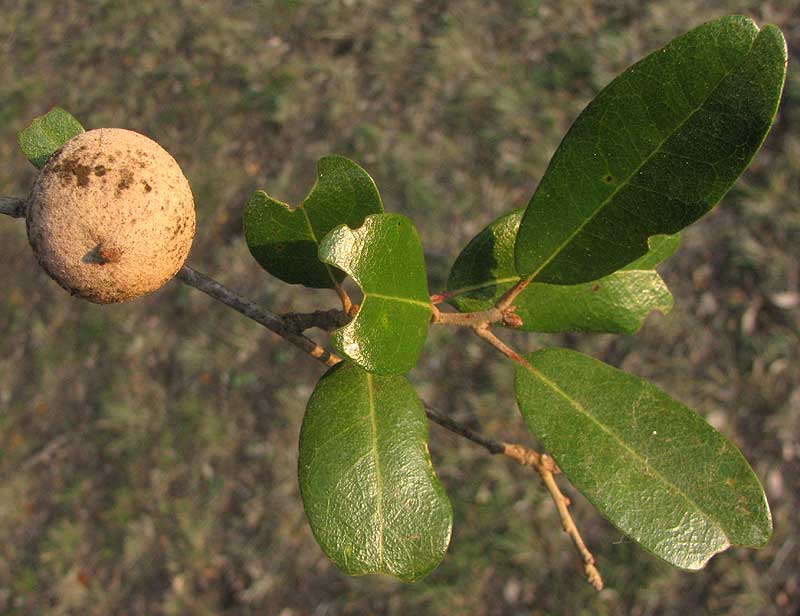Excerpts from Jim Conrad's
Naturalist Newsletter

from the December 16, 2012 Newsletter issued from the valley of the Dry Frio River in northern Uvalde County, southwestern Texas, on the southern border of the Edwards Plateau; elevation ~1750m (~5750 ft); N29.62°, W99.86°; USA
MEALY OAK GALL
Branches of our Texas Live Oaks often bear golfball-sized galls like the one shown above. These galls are conspicuous and well known in Texas, western Louisiana and parts of arid northern Mexico where live oaks occur, and they appear only on live oaks. We've seen galls of similar size, shape and position on tree limbs elsewhere, but they all looked a little different.
The gall, known well enough to bear the common name of Mealy Oak Gall, is caused by a ¼-inch long cynipid wasp called Disholcaspis cinerosa. Interestingly, D. cinerosa produces two generations annually -- an asexual one and a sexual one -- each producing a distinctively different gall type. Our picture's gall is the late summer and early fall type. The spring-type galls are smaller, resembling kernels of wheat in size and shape.
In December and January adult wasps emerge from these fall-type galls by chewing escape holes in the gall walls. All wasps emerging at this time are asexual females who then lay eggs in the terminals of new live-oak leaf shoots causing the spring-type galls. The generation of wasp emerging from the spring-type galls will consist of both males and females, and they'll be about 1/3 the size of the earlier asexual generation.
Abandoned Mealy Oak Galls provide homes to many beneficial insects, but homeowners who see their lawn trees bearing them generally want them off. They seldom do much damage to healthy trees.
A well illustrated document in PDF format discussing Mealy Oak Galls in detail and addressing their damage to trees is provided by the Texas Agricultural Extension Service for free at the Mealy Oak Gall link at http://nueces.agrilife.org/publications/trees-insects-and-problems/.